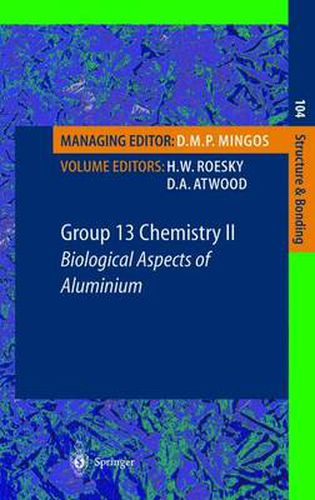Readings Newsletter
Become a Readings Member to make your shopping experience even easier.
Sign in or sign up for free!
You’re not far away from qualifying for FREE standard shipping within Australia
You’ve qualified for FREE standard shipping within Australia
The cart is loading…






This title is printed to order. This book may have been self-published. If so, we cannot guarantee the quality of the content. In the main most books will have gone through the editing process however some may not. We therefore suggest that you be aware of this before ordering this book. If in doubt check either the author or publisher’s details as we are unable to accept any returns unless they are faulty. Please contact us if you have any questions.
Aluminum, bound almost exclusively to oxygen in various combinations, is the most abundant metal in the earth’s crust and, therefore, of great commercial potential. Once methods were developed (in the 1880’s) to free useable quantities of the element from oxygen, applications for the element began developing rapidly. This growth has resulted in the ubiquity of the metal in today’s world. Therefore it can be found intentionally introduced in many products in direct contact with human beings. It is commonly known that soluble forms of aluminum aretoxic to living organisms. However, aluminum is not known to be bioavailable under everyday conditions. In fact, the solubility product of common aluminum compounds, such as AI(OH)3 is so low as to make it essentially unavailable. This volume of Structure and Bonding seeks to provide in one source, a resource where the basic science related to aluminum toxicity may be obtained. It should be stressed that this volume is not intended to be a warning to avoid contact with aluminum. Living organisms have adequate defenses to prevent aluminum toxicity under normal conditions. Rather the volume was created to simply provide an understanding of the biological effects of aluminum. As such, the present volume should be considered in the context of the companion volumes in this three part series of Structure and Bonding. The first volume was devoted to fundamental developments in group 13 chemistry.
$9.00 standard shipping within Australia
FREE standard shipping within Australia for orders over $100.00
Express & International shipping calculated at checkout
This title is printed to order. This book may have been self-published. If so, we cannot guarantee the quality of the content. In the main most books will have gone through the editing process however some may not. We therefore suggest that you be aware of this before ordering this book. If in doubt check either the author or publisher’s details as we are unable to accept any returns unless they are faulty. Please contact us if you have any questions.
Aluminum, bound almost exclusively to oxygen in various combinations, is the most abundant metal in the earth’s crust and, therefore, of great commercial potential. Once methods were developed (in the 1880’s) to free useable quantities of the element from oxygen, applications for the element began developing rapidly. This growth has resulted in the ubiquity of the metal in today’s world. Therefore it can be found intentionally introduced in many products in direct contact with human beings. It is commonly known that soluble forms of aluminum aretoxic to living organisms. However, aluminum is not known to be bioavailable under everyday conditions. In fact, the solubility product of common aluminum compounds, such as AI(OH)3 is so low as to make it essentially unavailable. This volume of Structure and Bonding seeks to provide in one source, a resource where the basic science related to aluminum toxicity may be obtained. It should be stressed that this volume is not intended to be a warning to avoid contact with aluminum. Living organisms have adequate defenses to prevent aluminum toxicity under normal conditions. Rather the volume was created to simply provide an understanding of the biological effects of aluminum. As such, the present volume should be considered in the context of the companion volumes in this three part series of Structure and Bonding. The first volume was devoted to fundamental developments in group 13 chemistry.